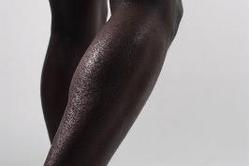
Blood clots can be formed in the legs. - Contributed Diana Rossetti, Contributor
In 2003 NBC journalist David Bloom, reporting from Iraq, died of a pulmonary embolism that developed after he travelled hours in a cramped Humvee.
A blood clot formed in the deep vein system of the lower leg. The condition is called deep vein thrombosis, better known as DVT or 'Economy Class Syndrome' because it can arise from sitting in the same position for an extended period of time.
The American Heart Association says DVT strikes one of every 2,000 people and affects up to two million Americans annually.
"So many people sit all day, hours on end, at computers or whatever," commented Dr. Jeffrey Prem, medical director of Mercy Medical Center's vascular lab in Canton, Ohio. "If you're a normal, healthy individual, it is good to try to become mobile on at least an hourly basis, especially if you are on an aeroplane. To avoid DVT, you will want to become well hydrated and avoid anything that could make you dehydrated, such as drinking alcohol.
Taking an aspirin is a generalised recommendation before you leave. Of course, if you already have a clotting disorder - people who already take medication that thins their blood to decrease their risk of clotting - you're at higher risk regardless. Those individuals can't take an aspirin."
Flex, hydrate, get support
In addition to regularly flexing the legs, ankles and feet, whether during air or car travel, there is another simple measure that can be taken, he said. Try wearing graduated support stockings.
"We know that the muscles of the legs, particularly the calf muscle, help to move blood through the veins back to the heart," Prem explained. "Graduated support stockings help the body to do it a little easier moving blood against gravity back to your heart."
When he spends eight hours a day in the operating room, the 38-year-old surgeon said he wears support stockings for the protection they provide as well as their ability to ward off fatigue in his legs.
Paul Amatangelo, co-owner of AmesWalker.com, a manufacturer of compression hosiery, says his stockings provide health and comfort. The executive also wears the stockings during lengthy air travel.
"Though our primary target audience is a little bit older and first introduced to support hosiery when they have circulation problems in the legs, today we really cross all age groups," Amatangelo said.
"I wear them when I fly, and they do make your legs feel better. They reduce swelling, too. Always at a trade show when I'm on my feet, it is a multiple benefit product. I feel fewer aches and pains when I wear them."
Athletes are signing on
The popularity of support or compression hosiery has spread to athletes, said Amatangelo.
"During the last World Cup, in 2002 or 2003, the British soccer team actually wore the support hosiery and madea stop from the transit in Seoul, halfway, to exercise," he said. "And Paula Radcliffe, a famous marathoner out of the United Kingdom wears knee-highs when she runs. She swears they improve her times. And most certainly, the way her legs feel post-marathon. She wears a product that comes out of my mill."
During a recent flight to London, an off-duty flight attendant told a reporter that, early in her career, she learned from a veteran colleague that wearing support pantyhose helped keep her legs from feeling fatigued. "Then when we began wearing uniforms with pants more often, I went to the compression knee-highs," said Lynn Savitch of New York. "They felt good on my legs right away, not too tight. But the real thing was how I felt at the end of a shift. I could tell the difference right away."
Visit Copley News Service at www.copleynews.com.

